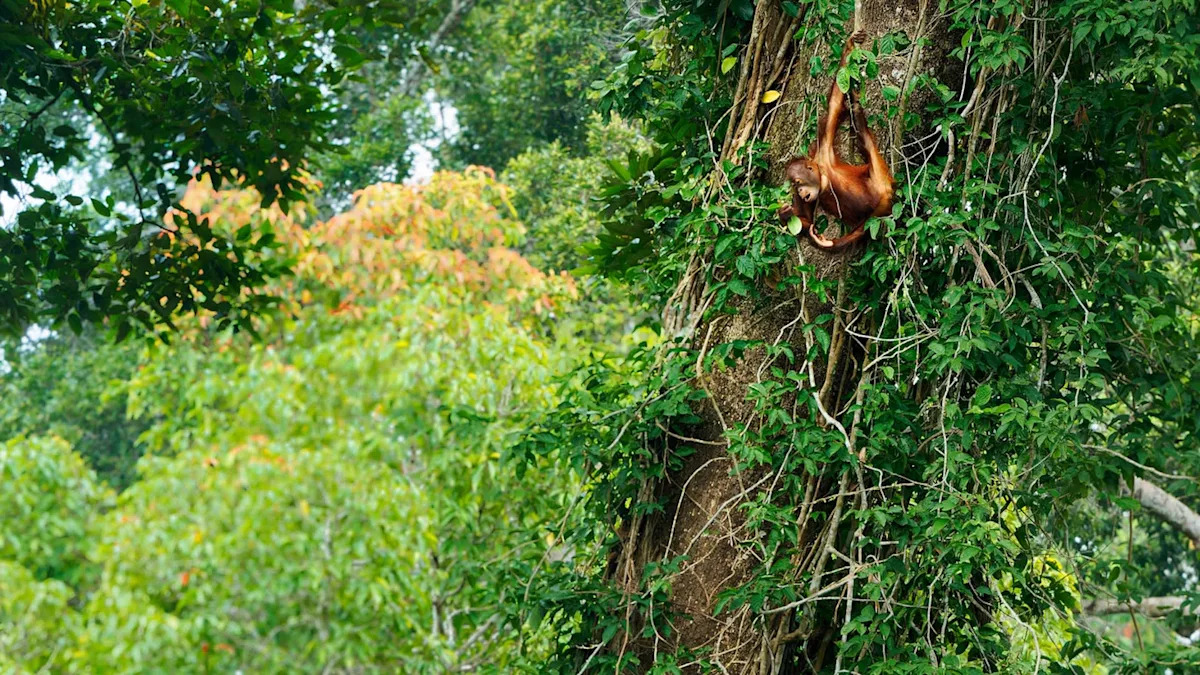The Sumatran Orangutan Conservation Foundation, Orangutan Information Centre (YOSL-OIC) safeguards highly threatened apes in Indonesia by conducting field studies, evaluating habitats, and partnering with people who live near the forests.
According to Mongabay, people in villages near Lumut Maju told YOSL-OIC about seeing orangutans in their area starting in 2022.
The conservation team made several trips to investigate, finding sleeping platforms and other clues that apes were using the forest. In September, researchers directly observed an adult with her baby, confirming the reports were accurate.
The discovery was even more striking than anticipated, though. The animals were identified as Tapanuli orangutans.
Only about 800 of these apes exist, and they are listed as “critically endangered” on IUCN’s Red List. Before this finding, scientists knew of just one forest where they lived, called Batang Toru.
The conservation group’s investigation revealed the species also uses wetland forests about 20 miles away. Workers collected fecal samples and sent them for lab testing to identify which type of orangutan they had found.
Lab results confirmed Tapanuli orangutans, making this the first documented case of the species outside Batang Toru.
This demonstrates that forests people haven’t paid much attention to can support orangutan groups. The wetland area where YOSL-OIC documented these apes lacks formal protection, which means companies can clear it. Under 2,500 acres of trees remain.
Finding out about this new location for Tapanuli orangutans could shape decisions about moving apes or connecting forests. For people farming nearby, the research helps develop methods so both humans and wildlife can share the landscape.
YOSL-OIC keeps monitoring this group to learn what foods they prefer, how far they roam, and if they can survive there permanently.
“It’s wonderful news, but their habitat is being eroded daily,” said orangutan expert Panut Hadisiswoyo, an advocate of this translocation strategy, per Seasia.
“Reconnecting the Lumut forest to Batang Toru is highly improbable. Moving them to a more secure block within the Batang Toru ecosystem would enhance genetic diversity and population numbers.”
Experts estimate the wetland holds under 100 orangutans, which falls short of numbers usually needed for healthy populations. YOSL-OIC’s ongoing studies will show whether these apes should stay put or be transported to join the larger Batang Toru community.
“Cohabitation will be realized when there is behavioral adjustment between humans and orangutans, resulting in increased animal populations and communities continuing to receive social legitimacy and economic benefits,” researcher Wanda Kuswanda of Indonesia’s National Research and Innovation Agency told Mongabay.
Join our free newsletter for good news and useful tips, and don’t miss this cool list of easy ways to help yourself while helping the planet.

